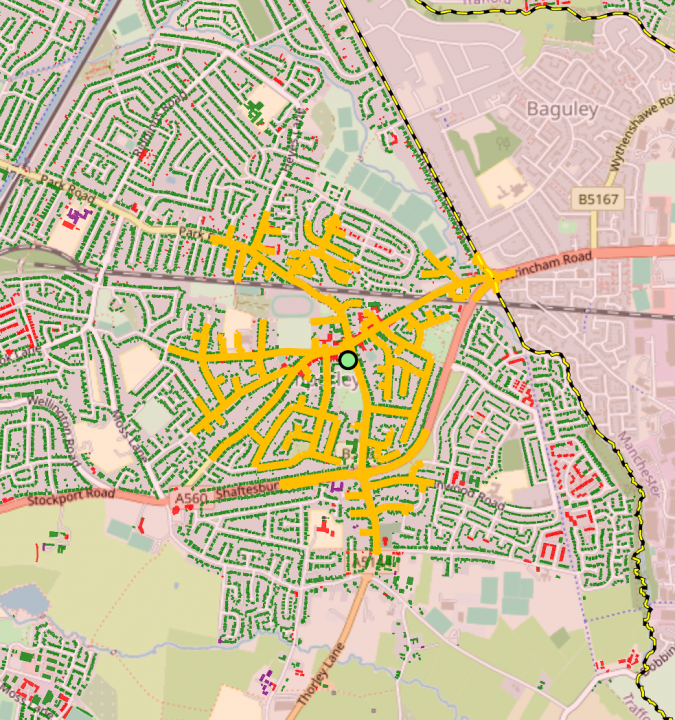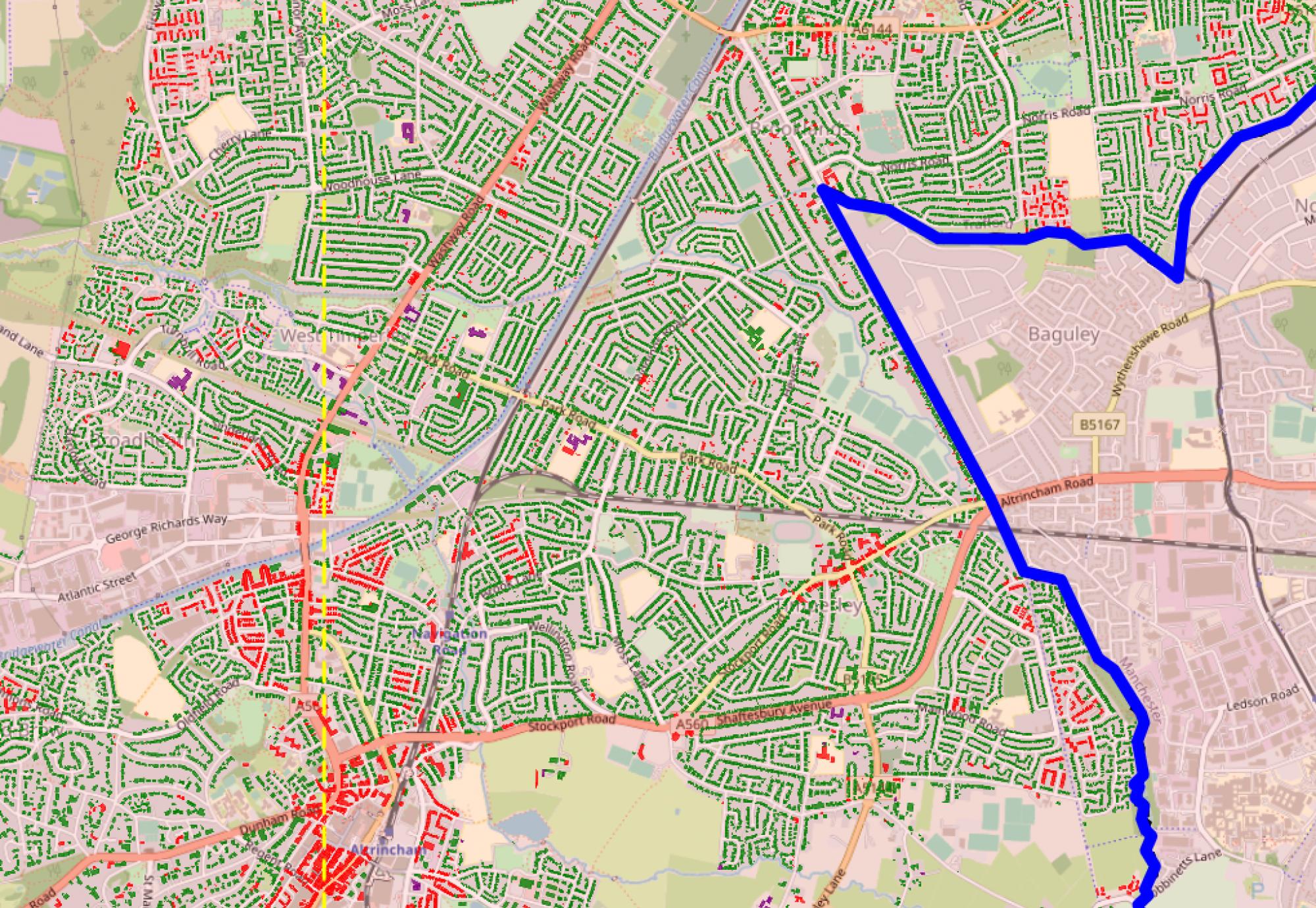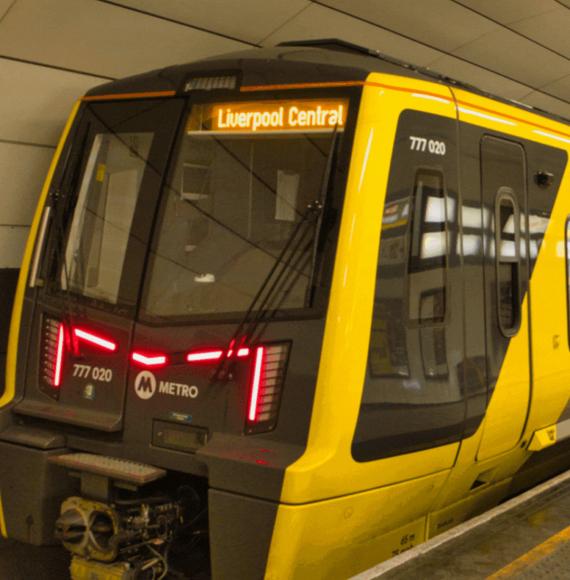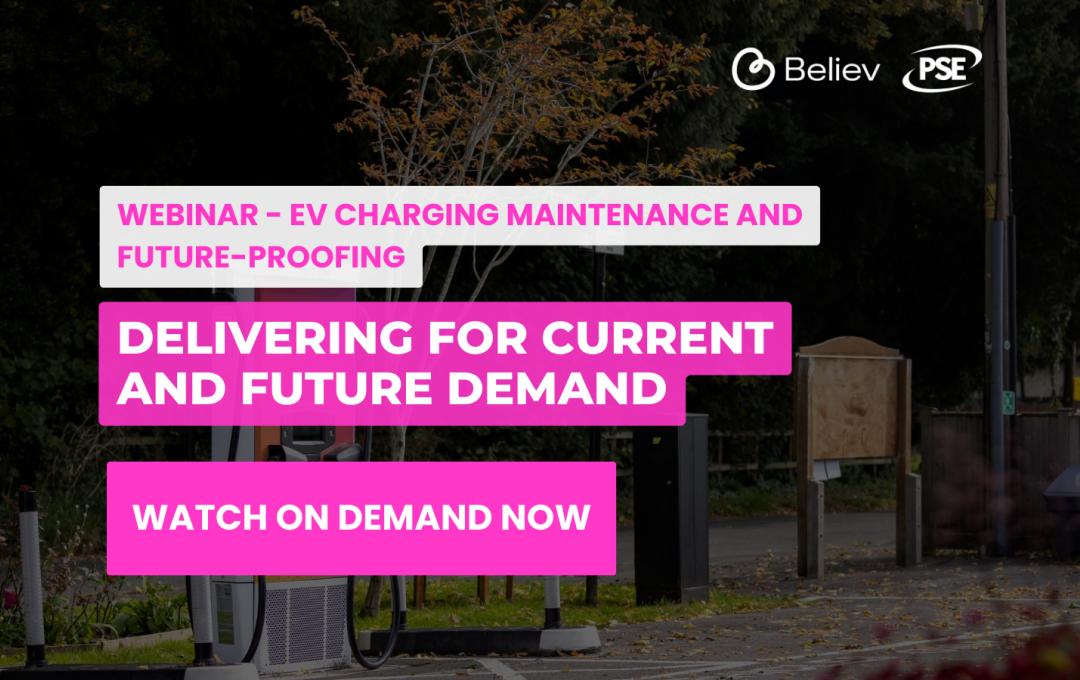A roll-out in Trafford, guided by data
To enable a swift and inclusive transition to electric vehicles (EV), councils are facing a dual challenge.
Firstly, current numbers of EVs on the road are relatively small (~4.5%) but constantly rising. Investment in and planning of EV infrastructure is for tomorrow’s drivers, anticipating tomorrow’s demand.
Secondly, the people who do drive an EV today are often in affluent areas and don’t rely as much on public charging to make EVs work for them. It’s people without access to home charging who need public charging infrastructure the most to make the switch to EV feasible.
Trafford Council is an example of a local authority keen to plug that feasibility gap and make it possible for everybody within its bounds to go electric. But how do you plan and prioritise a roll-out that is based on future needs?
At Be.EV, we’ve been working with the Trafford team to do just that – come up with a plan that prioritises by need and impact, as well as taking into account the possible speed of installation. It’s the biggest roll-out of its kind in the region. Here’s what we’ve learnt.
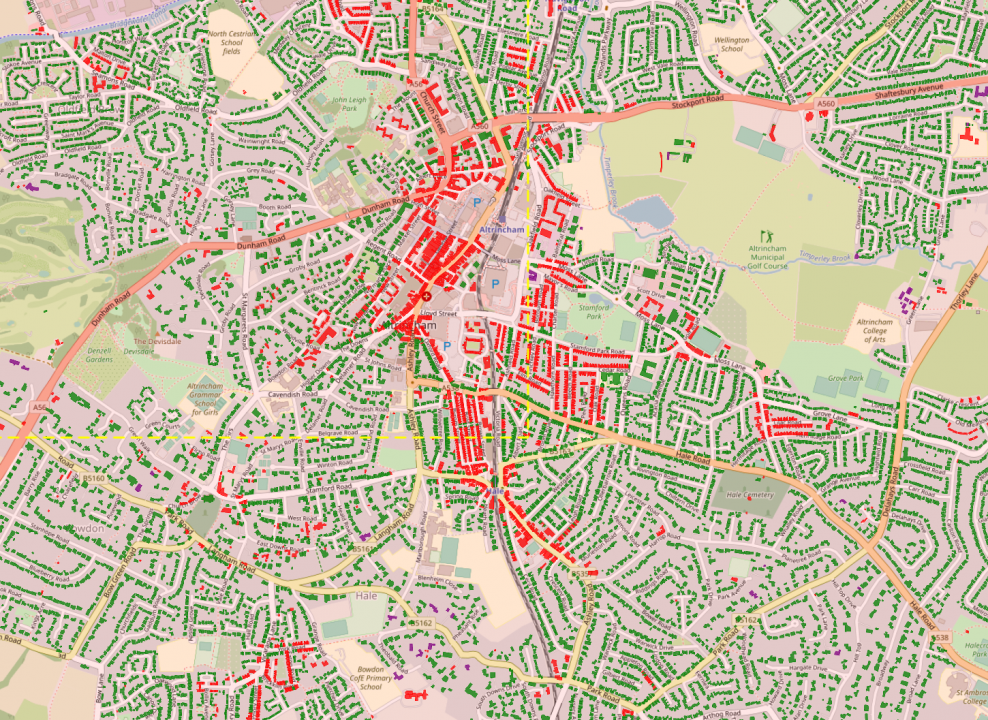
Boots on the ground
First of all, you can’t plan a network by taking a bird’s eye view. You have to be on the ground and in the community. Our team has carried out a thorough review of carparking in Trafford – by visiting a lot of carparks. It means you get a feel for immediate opportunities and really understand neighbourhood infrastructure.
We then go away to build maps and data models. We start by showing all of the council’s assets – carparks, leisure centres, etc – on one map to see what land is available. Later, this can be supplemented by private sites identified through local business and landowner engagement.
Overlaid on that, we can map data on existing and planned public charging infrastructure, to see where the gaps are. The advantage: you get the full picture of local charging provision, including “borrowed” infrastructure that sits just outside council boundaries.
Layers and layers
Using geo-spatial mapping software, we build a rich picture of neighbourhoods – creating maps with layers of data on top.
We can show areas with low or high availability of off-street parking or driveways, drilling down to a very granular level and on a street-by-street basis. It allows us to focus the roll-out of public charging infrastructure where it’s the most needed: in areas with low off-street parking availability and therefore no option of home charging.
All this enables us to identify and prioritise sites quickly – and objectively. We can then sense check those by looking at an “isochrone” map layer that gives us areas within 10 minutes walking distance of those sites and helps plan the phases of the roll-out.
No limits
That’s the science and data bit that helps us get to a robust plan, but the right strategic approach matters too. In our project with Trafford Council, there’s no fixed maximum number of sites, but rather a joint goal of steadily building up the right network in the right way - for everyone across the borough.
It’s about coming up with a strategy beyond the first few sites – to build a sustainable network that can evolve to support the needs of the local community.
Basing charger location decisions on facts, data and a clear methodology meets the accountability demands of local authorities and ensures a transparent, objective process.
It’s a genuinely forward-thinking approach by the Council and a great case for local authority involvement in the EV charging roll-out. If it was left to the private sector alone, chargers would only go into affluent areas.
Find out more about our work with Trafford Borough Council here.
Be.EV is a public EV charging provider. It builds concentrated regional charging networks that work for local communities. Be.EV runs the largest public EV charging network in the North West and is expanding rapidly across the North and beyond. It works with local authorities, the NHS, universities and private businesses to make EV charging accessible to all.
